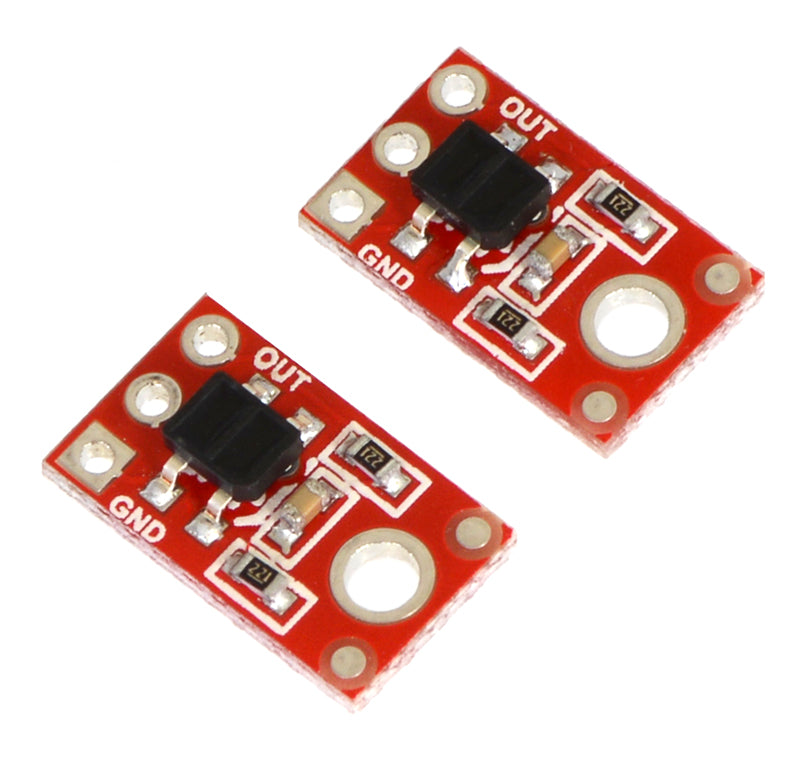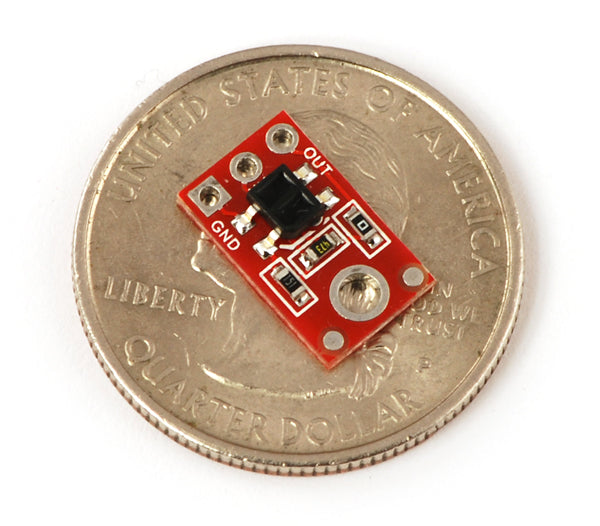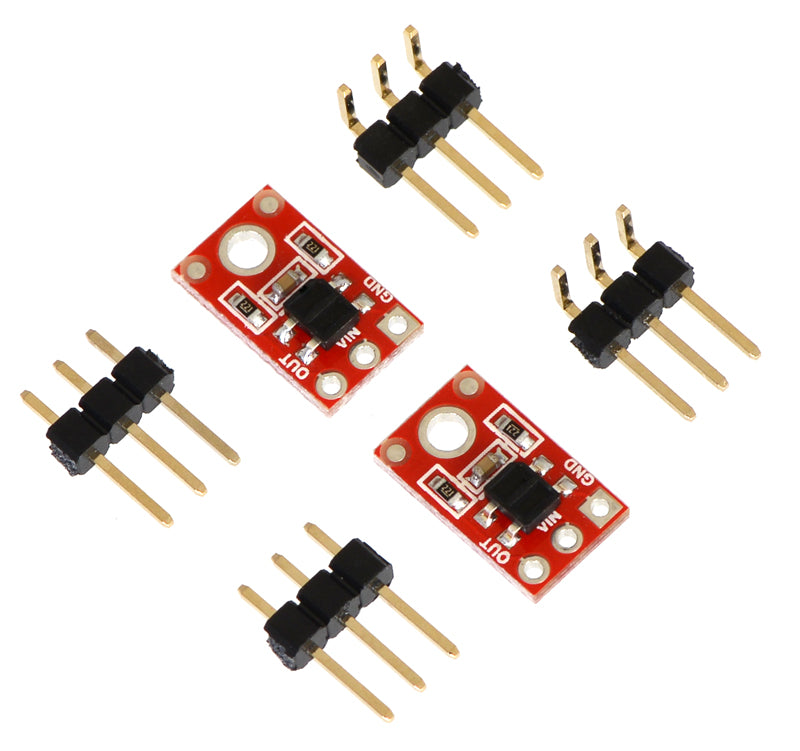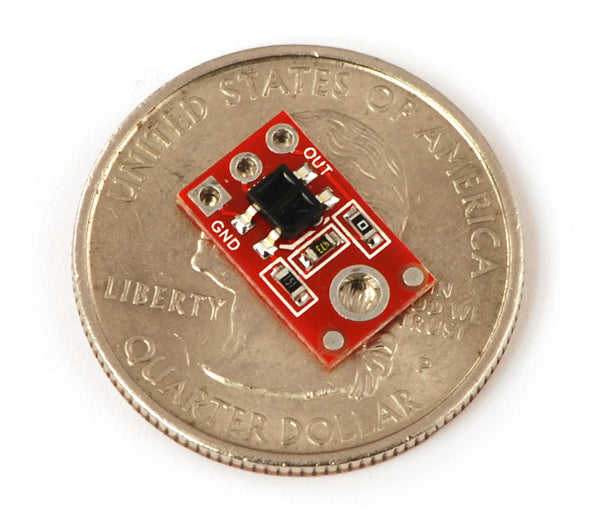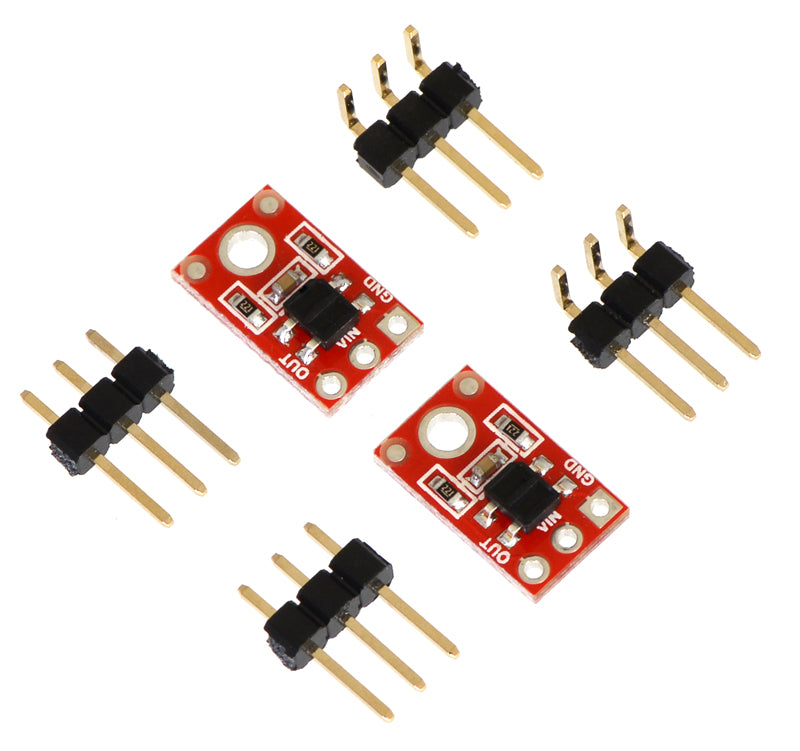QTR-1RC Reflectance Sensor 2-Pack
The QTR-1RC reflectance sensor carries a single infrared LED and phototransistor pair in an inexpensive, tiny 0.5" x 0.3" module that can be mounted almost anywhere and is great for edge detection and line following. The output is designed to be measured by a digital I/O line. This sensor is sold in packs of two units.
The Pololu QTR-1RC reflectance sensor carries a single infrared (IR) LED and phototransistor pair. To use the sensor, you must first charge the output node by applying a voltage to the OUT pin. You can then read the reflectance by withdrawing the externally supplied voltage and timing how long it takes the output voltage to decay due to the integrated phototransistor. Shorter decay time is an indication of greater reflection. This measurement approach has several advantages, especially when multiple units are used:
- No analog-to-digital converter (ADC) is required
- Improved sensitivity over voltage-divider analog output
- Parallel reading of multiple sensors is possible with most microcontrollers
This sensor was designed to be used with the board parallel to the surface being sensed. Because of its small size, multiple units can easily be arranged to fit various applications such as line sensing and proximity/edge detection.
SPECIFICATIONS:
- Dimensions: 0.3" x 0.5" x 0.1" (without optional header pins installed)
- Operating voltage: 5.0 V
- Supply current: 17 mA
- Output format: digital I/O-compatible signal that can be read as a timed high pulse
- Optimal sensing distance: 0.125" (3 mm)
- Maximum recommended sensing distance: 0.375" (9.5 mm)
- Weight without header pins: 0.008 oz (0.2 g)
Interfacing the QTR-1RC output to a digital I/O line
Like the Parallax QTI, this sensor requires a digital I/O line capable of driving the output line high and then measuring the time for the output voltage to decay. The typical sequence for reading a sensor is:
- Set the I/O line to an output and drive it high.
- Allow at least 10 μs for the sensor output to rise.
- Make the I/O line an input (high impedance).
- Measure the time for the voltage to decay by waiting for the I/O line to go low.
These steps can typically be executed in parallel on multiple I/O lines.
With a strong reflectance, the decay time can be as low as several dozen microseconds; with no reflectance, the decay time can be up to a few milliseconds. The exact time of the decay depends on your microcontroller’s I/O line characteristics. Meaningful results can be available within 1 ms in typical cases (i.e. when not trying to measure subtle differences in low-reflectance scenarios), allowing up to 1 kHz sampling.
QTR-1RC Reflectance Sensor 2-Pack
QTR-1RC Reflectance Sensor 2-Pack
Out of stock
Product Code
SKU:POL2459
Couldn't load pickup availability
